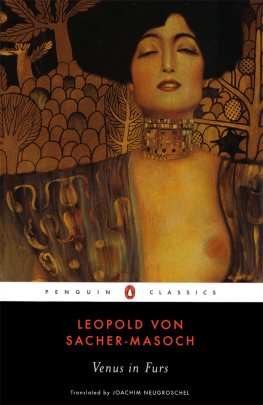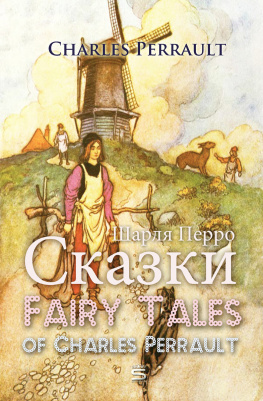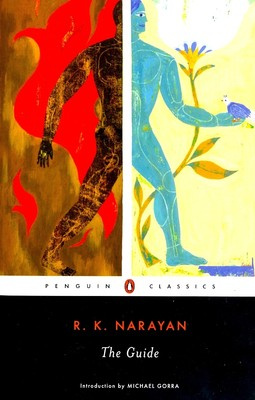
VENUS IN FURS
LEOPOLD VON SACHER - MASOCH was born in 1836 in Lemberg (today Lvov), in the province of Habsburg Galicia. His father was the police prefect of the city, and the family moved, within the Habsburg monarchy, to Prague in 1848 and to Graz in 1854. Sacher-Masoch attended the university in Graz, and though he had previously grown up in urban environments where Ukrainian, Polish, and Czech were spoken, his education made him a German writer. His earliest works were Habsburg histories, about the monarchy in the sixteenth century, during the reign of Charles V. In 1864 he wrote a novella, Don Juan von Kolomea, set in Habsburg Galicia, and in 1865 a historical novel about the eighteenth-century Habsburg chancellor Prince Kaunitz. In 1870 he published several novellas, conceived as part of a larger fictional work, The Testament of Cain; one of these was Venus in Furs, which earned him immediate notoriety for its unprecedented treatment of a man who passionately made himself the slave of the woman he loved. Later works of fiction included tales of the Viennese court, tales of the Russian court, Galician tales, and Jewish tales. His literary fascination with Jewish scenarios, especially in Galicia, led to the public misconception that he was himself Jewish. In 1872 he met Aurora Rmelin, who married him and assumed the name, as well as the erotic persona, of Wanda, the heroine of Venus in Furs. They had several children together, and an unusual married lifewhich she later recounted in her memoirsfocused on the fulfillment of his unconventional romantic obsessions. Sacher-Masoch emigrated from the Habsburg monarchy in 1881, having been sentenced to eight days in prison after a legal dispute with a publisher. Thereafter he lived in Germany, though he was unsympathetic to the spirit of imperial German nationalism, and perhaps received better appreciation from the literary public in France, where he was awarded the cross of the Legion of Honor in 1883. In 1890 Richard von Krafft-Ebing introduced masochism as a clinical category in his Psychopathia Sexualis. When Sacher-Masoch died in 1895, his works of fiction, and especially Venus in Furs, were already widely recognized as giving literary expression to a not uncommon, but previously little discussed, complex of romantic and sexual fantasies.
LARRY WOLFF is professor of European history at Boston College. He is the author of The Vatican and Poland in the Age of the Partitions, of Postcards from the End of the World: Child Abuse in Freuds Vienna, of Inventing Eastern Europe: The Map of Civilization on the Mind of the Enlightenment, and of a forthcoming book, Venice and the Slavs.
JOACHIM NEUGROSCHEL has translated numerous books from French, German, Italian, Russian, and Yiddish. He has won three PEN translation awards and the French-American translation prize. He has also translated Thomas Mann, Hermann Hesse, and Alexandre Dumas for Penguin Classics.
LEOPOLD VON
SACHER-MASOCH
Venus in Furs
Translated by
J OACHIM NEUGROSCHEL
With an Introduction by
LARRY WOLFF
and Notes by
J OACHIM NEUGROSCHEL
PENGUIN BOOKS
PENGUIN BOOKS
Published by the Penguin Group
Penguin Group (USA) Inc., 375 Hudson Street, New York, New York 10014, U.S.A.
Penguin Group (Canada), 90 Eglinton Avenue East, Suite 700, Toronto, Ontario, Canada M4P 2Y3 (a division of Pearson Penguin Canada Inc.)
Penguin Books Ltd, 80 Strand, London WC2R 0RL, England
Penguin Ireland, 25 St Stephens Green, Dublin 2, Ireland (a division of Penguin Books Ltd)
Penguin Group (Australia), 250 Camberwell Road, Camberwell, Victoria 3124,
Australia (a division of Pearson Australia Group Pty Ltd)
Penguin Books India Pvt Ltd, 11 Community Centre, Panchsheel Park,
New Delhi 110 017, India
Penguin Group (NZ), 67 Apollo Drive, Rosedale, North Shore 0632, New Zealand
(a division of Pearson New Zealand Ltd)
Penguin Books (South Africa) (Pty) Ltd, 24 Sturdee Avenue, Rosebank,
Johannesburg 2196, South Africa
Penguin Books Ltd, Registered Offices: 80 Strand, London WC2R 0RL, England
This translation first published in Penguin Books 2000
20 19 18
Translation copyright Joachim Neugroschel, 2000
Introduction and notes copyright Larry Wolff, 2000
All rights reserved
LIBRARY OF CONGRESS CATALOGING-IN-PUBLICATION DATA
Sacher-Masoch, Leopold, Ritter von, 18351895.
[Venus im Pelz. English]
Venus in furs / Leopold von Sacher-Masoch; translated from the German by Joachim Neugroschel; with an introduction by Larry Wolff and notes by Joachim Neugroschel.
p. cm.
Includes bibliographical references.
ISBN: 978-1-101-64018-0
I. Neugroschel, Joachim. II. Wolff, Larry. III. Title.
PT2461.S3V3513?2000
833.8dc21 99-055346
Printed in the United States of America
Set in Stempel Garamond
Except in the United States of America, this book is sold subject to the condition that it shall not, by way of trade or otherwise, be lent, resold, hired out, or otherwise circulated without the publishers prior consent in any form of binding or cover other than that in which it is published and without a similar condition including this condition being imposed on the subsequent purchaser.
The scanning, uploading and distribution of this book via the Internet or via any other means without the permission of the publisher is illegal and punishable by law.
Please purchase only authorized electronic editions, and do not participate in or encourage electronic piracy of copyrighted materials. Your support of the authors rights is appreciated.
INTRODUCTION
MY MOST CHERISHED FANTASY
I feel justified in calling this sexual anomaly Masochism, wrote Richard von Krafft-Ebing, creating a new clinical category for his Psychopathia Sexualis, because the author Sacher-Masoch frequently made this perversion, which up to his time was quite unknown to the scientific world as such, the substratum of his writings. Krafft-Ebing, who introduced the term in 1890, was not merely borrowing the name of Leopold von Sacher-Masoch as a convenient label; rather, the case histories in the many editions of Psychopathia Sexualis indicated that Sacher-Masoch, through his published writings and even through personal contacts, had already long exercised a sort of cult appeal upon people who recognized their own sexual inclinations in his literary work. Case 114 from the 8th edition of 1893 described a man who longed to be the slave of the beloved, referring for this purpose to Sacher-Masochs Venus in Furs. Case 57 from the 12th edition of 1903 told of a man who first began to fantasize about slavery and flagellation when he read Uncle Toms Cabin as a boy; later he wondered whether he could hope to find sadistically constituted women like Sacher-Masochs heroines, and whether it would be possible to find sexual satisfaction, if there were such women, and I had the fortune (!) to find one. Case 68 told of a young artist who was most sexually aroused when faced with female anger, and who thought that only a woman like the heroines of Sacher-Masochs romances could charm him. Case 80 described a man with a special interest in licking womens feet, who actually corresponded with Sacher-Masoch, and received guidance from the master:
One of these letters, dated 1888, shows as a heading the picture of a luxuriant woman, with imperial bearing, only half covered with furs and holding a riding-whip as if ready to strike. Sacher-Masoch contends that the passion to play the slave is widespread, especially among the Germans and Russians. In this letter, the history of a noble Russian is related who loved to be tied and whipped by several beautiful women. One day he found his ideal in a pretty young French woman and took her to his home.
Next page










